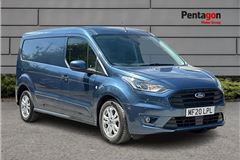Ford Transit Connect (2014 – 2024) Review
Ford Transit Connect (2014 – 2024) At A Glance
Easy to drive, practical and well-equipped as standard, the Ford Transit Connect is one of the best all-rounders in the small van market. Admittedly, it can't match the payload of the Vauxhall Combo or Peugeot Partner, but it still has enough in its locker to nudge its way to the front of the small van pack.
Ford offers the Connect van in two wheelbases - L1 and L2 - with panel van, double-cab in-van and Kombi variants. Older versions will carry up to 1000kg, but payloads are lower for post- 2018 facelift models - at 865kg for the L1 panel van and 833kg for L2. The largest versions provide 4.4 cubic metres of loadspace and there are also some really clever details, like folding front seats and a hatch in the bulkhead to make carrying metal pipes possible.
The Transit Connect was launched with Ford's trusty 1.6-litre TDCi in 2014 with 75, 95 or 115PS. For those who cover shorter distances on a daily basis, 1.0-litre 100PS EcoBoost petrol is also offered. In late-2016 Ford replaced the 1.6 TDCi with the 1.5 EcoBlue diesel engine, lowering tailpipe emissions and increasing torque across the board.
The 1.5 diesel produces more power - 75, 100 or 120PS - while maximum torque increases to 300Nm for the most-powerful version. Buyers can also inject some high octane style with the Transit Connect Sport. All models get Ford's Easy Fuel capless refuelling system that makes it (almost) impossible to put the wrong type of fuel into the van.
On the road, the Transit Connect drives like a good family car with nicely weighted steering and plenty of low-gear torque for hauling heavy payloads. Some of the older 1.6 diesels can get quite vocal under hard acceleration, but general refinement is fine with the newer 1.5 four-cylinder engines. Most of the older versions of the Transit Connect use a five-speed manual gearbox, but updates to the model range in 2018 saw the introduction of a six-speed transmission, along with an eight-speed auto.
The dashboard layout is easy to master and there is lots of useful storage for maps, loose documents and cups. All vans get Ford's Quickclear windscreen as standard, which heats small wires within the glass to de-ice the screen without the need for manual scraping.
Panel van version of the Transit Connect get two-seats, while crew cab versions add an extra bench with three additional seats but cut the loadspace to just 1.2 cubic metres in L1 and 1.6 cubic metres in L2. Newer versions do get some useful optional tech that includes wireless phone charging, climate control and a three pin plug in the cabin for charging tools. High spec vans also get touchscreen infotainment and navigation.
Driving the Ford Transit Connect (2014 – 2024)
Ford has a strong reputation for building strong handling cars and vans, and the Transit Connect is no exception. Based on the same platform as the Ford C-MAX, the Transit Connect drives like a well thought out family car, with a comfortable ride capable of absorbing most lumps and bumps in the road, whether there’s a load in the back or not. Despite providing a good degree of ride comfort the suspension offers decent road-holding and handling, with little in the way of body roll through bends.
The oldest versions of the Transit Connect are mostly powered by the 1.6-litre diesel engine with a choice of 75, 95 or 115PS. The lower output models come with a five-speed transmission while the 115PS model comes with a six-speed 'box. There’s also a 1.0-litre EcoBoost petrol engine with 100PS, along with a more powerful 1.6-litre version with 150PS. The 1.6 EcoBoost was phased out in 2016.
The 95PS diesel is one of the highlights of the range: it’s a flexible engine that’s at home on country roads or in town, whether the van is laden or unladen. In gear performance is strong thanks to torque of 230Nm and refinement is strong. The only real issue is the lack of a sixth gear when on the motorway, but that’s solved by specifying the more powerful 115PS output engine which gets six gears as standard.
Even the entry level 75PS diesel engine delivers a decent amount of torque at 220Nm, while the top 115PS engine produces 270Nm. The cleanest model is the 1.5 TDCI fitted optional fuel economy package; it'll return 105g/km of CO2 and average an official 70.6mpg.
In late 2016 the 1.6 TDCI was axed in favour of the 1.5 TDCI - branded as 'EcoBlue' - with more power and lower emissions. Power outputs increased slightly - 75 100 and 120PS - and all versions produce more torque, with the best-selling 100PS unit producing 250Nm at 2000rpm.
A midlife update in 2018 gave all vans a six-speed manual gearbox as standard, while Ford added its eight-speed automatic to the options list and gave the interior a much needed makeover, with new seats, refreshed dash and the option of touchscreen infotainment.
The 1.5 TDCI four-cylinder engine was also heavily revised and rebranded EcoBlue. However, due to the tougher WLTP rules for measuring fuel consumption and CO2 emissions, economy claims from 2018 are lower compared to the older versions of the Transit Connect. This means the old 58-71mpg figures are replaced with 56-60mpg. The 1.0-litre EcoBoost is advertised with an official 44.1mpg, which is roughly 6mpg short of Ford's pre-2018 figure.
Ford Transit Connect (2014 – 2024) interior
Ford offers two lengths with the option of double-cab and Kombi models, the latter of which is essentially a small people carrier available with five or seven seats, making it an ideal airport taxi.
In the more traditional van layout, all Transit Connects come with a full metal bulkhead as standard, available with a glazed or unglazed section. Buyers can also get a fold-flat passenger seat and a through-load hatch, which means the L2 can transport planks or pipes as long as 3.4 metres, or 3.0 metres for the L1.
The design of the bulkhead is such that 2.4 x 1.2 metre (8x4 ft) sheets of material will fit in the back of an L2 van. LED loadspace lighting is a brilliant option and essential for anyone who loads/unloads their van at night.
L2 vans have space for two Euro pallets and impressively the sliding door is wide enough to enable Euro pallet loading and unloading at the side. Gross vehicle mass ratings range between 2.0 and 2.4 tonnes. To put that in perspective it means even the smallest model can carry 25 standard bags of cement before it's overloaded. However, unlike the Vauxhall Combo, the Transit Connect doesn't get an electronic overload warning system.
The Transit Connect can tow up to 1200kg and specifying a factory fit tow bar adds trailer stability control. The load deck of the Transit Connect is usefully low and so makes the loading and unloading easy, helped by rear doors that can be opened to 90 or 180 degrees while there's a smooth sliding side door. Additionally, a glazed rear lift-opening door with wash-wipe can be specified.
The rear row of seats splits 60/40 on double cab models and can be folded flat, but it’s worth mentioning that the folded seats don’t sit flush with the load deck - so loading long and heavy items like large items of furniture could be tricky. Nonetheless, the double cab offers plenty of space making it an ideal crew van for five.
Not so ideal is the front row of the regular van. The seat is laid out to fit two front row passengers, which puts the Transit Connect at a disadvantage against its three-seat rivals. You can correct this by fitting the optional 'dual passenger seat', which adds a third seat. However, in reality, this third seat is merely some additional cushioning and a seat belt buckle. Adults will find the middle seat an uncomfortable experience.
On the plus side this arrangement means a versatile front passenger seat that can be folded up for storing large boxes in the cabin. Additionally the small middle seat can be folded down into a work area or table and flips up to reveal a handy stowage box. Indeed, stowage in the cabin is excellent, with decent cubbies in the dash, doors and above the sun visors.
Material quality throughout is impressive, with hardwearing wipe-down plastics that should withstand years of abuse. The cabin comes with creature comforts like DAB radio, USB connectivity and steering wheel mounted audio controls as standard. A three-pin 230V/150W plug and wireless charging pad for a mobile phone are offered as available as optional extras.
Ford Transit Connect (2014 – 2024) models and specs
| Dimensions | |
|---|---|
| Length | 4418–5230 mm |
| Width | 1835–2374 mm |
| Height | 1836–2070 mm |
| Load Volume | 1.2–3.6 m3 |
| Miscellaneous | |
|---|---|
| Kerb Weight | 1342–1573 kg |
| Payload | 598–1004 kg |
| Warranty | 3 years / 100000 miles |
| Servicing | 20000 |
Crew Van L1
| Version | List Price | MPG | |
|---|---|---|---|
| 220 L1 Double Cab In 1.6TDCi 75 | £14,950 | 58.9 mpg | Details |
| 220 L1 Double Cab In 1.6TDCi 75 Fuel Economy Pack | £15,250 | 64.2 mpg | Details |
| 220 L1 Double Cab In 1.6TDCi 95 | £15,450 | 58.9 mpg | Details |
| 220 L1 Double Cab In 1.6TDCi 95 Fuel Economy Pack | £15,750 | 64.2 mpg | Details |
| 220 L1 Double Cab In 1.6TDCi Trend | £16,250 | 58.9 mpg | Details |
| 220L1 Double Cab In 1.6TDCi Trend Fuel Economy Pack | £16,550 | 64.2 mpg | Details |
Crew Van L2
| Version | List Price | MPG | |
|---|---|---|---|
| 230 L2 Double Cab In 1.6TDCi 115 Trend | £17,550 | 57.7 mpg | Details |
| 230 L2 Double Cab In 1.6TDCi 95 | £16,450 | 57.7 mpg | Details |
| 230 L2 Double Cab In 1.6TDCi 95 Fuel Economy Pack | £16,750 | 61.4 mpg | Details |
| 230 L2 Double Cab In 1.6TDCi Trend | £17,250 | 57.7 mpg | Details |
| 230L2 Double Cab In 1.6TDCi Trend Fuel Economy Pack | £17,550 | 61.4 mpg | Details |
Double Cab MWB
| Version | List Price | MPG | |
|---|---|---|---|
| Double Cab-in-Van 230 MWB 1.6 95 | £16,450 | 57.6 mpg | Details |
| Double Cab-in-Van Trend 230 MWB 1.6 115 | £17,550 | - | Details |
| Double Cab-in-Van Trend 230 MWB 1.6 95 | £17,250 | 57.6 mpg | Details |
Double Cab SWB
| Version | List Price | MPG | |
|---|---|---|---|
| Double Cab-in-Van 220 SWB 1.6 75 | £14,950 | 57.6 mpg | Details |
| Double Cab-in-Van 220 SWB 1.6 95 | £15,450 | 57.6 mpg | Details |
| Double Cab-in-Van Trend 220 SWB 1.6 95 | £16,250 | 57.6 mpg | Details |
Kombi MWB
| Version | List Price | MPG | |
|---|---|---|---|
| Kombi M1 230 MWB 1.5 100 | £16,233 | 70.6 mpg | Details |
Panel Van L1
| Version | List Price | MPG | |
|---|---|---|---|
| 200 L1 1.6TDCi 115 Limited | £16,550 | 60.1 mpg | Details |
| 200 L1 1.6TDCi 115 Trend | £15,450 | 60.1 mpg | Details |
| 200 L1 1.6TDCi 75 | £13,650 | 58.9 mpg | Details |
| 200 L1 1.6TDCi 75 Fuel Economy Pack | £13,950 | 64.2 mpg | Details |
| 200 L1 1.6TDCi 75 Trend | £14,450 | 58.9 mpg | Details |
| 200 L1 1.6TDCi 75 Trend Fuel Economy Pack | £14,750 | 64.2 mpg | Details |
| 200 L1 1.6TDCi 95 | £14,150 | 58.9 mpg | Details |
| 200 L1 1.6TDCi 95 Fuel Economy Pack | £14,450 | 64.2 mpg | Details |
| 200 L1 1.6TDCi 95 Trend | £14,950 | 58.9 mpg | Details |
| 200 L1 1.6TDCi 95 Trend Fuel Economy Pack | £15,250 | 64.2 mpg | Details |
| 220 L1 1.6TDCi 75 | £13,850 | 58.9 mpg | Details |
| 220 L1 1.6TDCi 75 Fuel Economy Pack | £14,150 | 64.2 mpg | Details |
| 220 L1 1.6TDCi 95 | £14,350 | 58.9 mpg | Details |
| 220 L1 1.6TDCi 95 Fuel Economy Pack | £14,650 | 64.2 mpg | Details |
| 220 L1 1.6TDCi 95 Trend | £15,150 | 58.9 mpg | Details |
| 220 L1 1.6TDCi 95 Trend Fuel Economy Pack | £15,450 | 64.2 mpg | Details |
Panel Van L2
| Version | List Price | MPG | |
|---|---|---|---|
| 210 L2 1.5TDCi Econetic | £16,135 | 67.3 mpg | Details |
| 210 L2 1.6TDCi 115 | £15,750 | 57.7 mpg | Details |
| 210 L2 1.6TDCi 75 | £14,750 | 57.7 mpg | Details |
| 210 L2 1.6TDCi 75 Fuel Economy Pack | £15,050 | 61.4 mpg | Details |
| 210 L2 1.6TDCi 95 | £15,250 | 57.7 mpg | Details |
| 210 L2 1.6TDCi 95 Fuel Economy Pack | £15,550 | 61.4 mpg | Details |
| 210 L2 1.6TDCi 95 Trend | £16,050 | 57.7 mpg | Details |
| 210 L2 1.6TDCi 95 Trend Fuel Economy Pack | £16,350 | 61.4 mpg | Details |
| 240 L2 1.6TDCi 115 | £16,150 | 57.7 mpg | Details |
| 240 L2 1.6TDCi 115 Limited | £18,050 | 57.7 mpg | Details |
| 240 L2 1.6TDCi 115 Trend | £16,950 | 57.7 mpg | Details |
| 240 L2 1.6TDCi 95 | £15,650 | 57.7 mpg | Details |
| 240 L2 1.6TDCi 95 Fuel Economy Pack | £15,950 | 61.4 mpg | Details |
| 240 L2 1.6TDCi 95 Trend | £16,450 | 57.7 mpg | Details |
| 240 L2 1.6TDCi 95 Trend Fuel Economy Pack | £16,750 | 61.4 mpg | Details |
Panel Van MWB
| Version | List Price | MPG | |
|---|---|---|---|
| 210 MWB 1.6 115 | £15,750 | 60.1 mpg | Details |
| 210 MWB 1.6 75 | £14,750 | 58.9 mpg | Details |
| 210 MWB 1.6 95 | £15,250 | 58.9 mpg | Details |
| 210 Trend MWB 1.6 95 | £16,050 | 58.9 mpg | Details |
| 240 Limited MWB 1.6 115 | £18,050 | 57.6 mpg | Details |
| 240 MWB 1.6 115 | £16,150 | 57.6 mpg | Details |
| 240 MWB 1.6 95 | £15,650 | 58.9 mpg | Details |
| 240 Trend MWB 1.6 115 | £16,950 | 57.6 mpg | Details |
| 240 Trend MWB 1.6 95 | £16,450 | 58.9 mpg | Details |
| ECOnetic 210 MWB 1.5 100 | £15,725 | 74.3 mpg | Details |
Panel Van SWB
| Version | List Price | MPG | |
|---|---|---|---|
| 200 Limited SWB 1.6 115 | £16,550 | 60.1 mpg | Details |
| 200 SWB 1.6 75 | £13,650 | 58.9 mpg | Details |
| 200 SWB 1.6 95 | £14,150 | 58.9 mpg | Details |
| 200 Trend SWB 1.0T 100 | £14,450 | 50.4 mpg | Details |
| 200 Trend SWB 1.6 115 | £15,450 | 60.1 mpg | Details |
| 200 Trend SWB 1.6 75 | £14,450 | 58.9 mpg | Details |
| 200 Trend SWB 1.6 95 | £14,950 | 58.9 mpg | Details |
| 220 SWB 1.6 75 | £13,850 | 58.9 mpg | Details |
| 220 SWB 1.6 95 | £14,350 | 58.9 mpg | Details |
| 220 Trend SWB 1.6 95 | £15,150 | 58.9 mpg | Details |
| ECOnetic 200 SWB 1.5 100 | £14,625 | 74.3 mpg | Details |
Model History
- September 2012: New Transit Connect unveiled
- July 2013: Transit Connect available to order
- June 2015: Transit Connect gets 1.5-litre TDCI engines
- December 2017: 2018 Ford Transit Connect unveiled
- September 2018: Midlife updates for Transit Connect range
- May 2019: Transit Custom takes Most Popular Small Van title at Honest John Awards.
- July 2020
September 2012
New Transit Connect unveiled
The all-new Ford Transit Connect was launched with Ford saying it will set new standards for load-carrying ability, cost of ownership and dependability in the compact van segment.
It will be available with the new Ford 1.0-litre EcoBoost engine and gets new technology like Active City Stop. Short wheelbase and long wheelbase versions will be offered with a load area total volume of 2.9m3 and 3.6m3. Along with the panel van will be a double-cab-in-van and Kombi people carrier versions.
Features including a load-through hatch in the bulkhead and fold-flat passenger seat enable long loads up to 3.0m (SWB) and 3.5m (LWB) to be safely carried in the vehicle. Additional new features to boost everyday productivity include a dual passenger seat, so that van models can now carry three people in the cab.
For Kombi and Double-Cab-in-Van models, maximum seating capacity is five (SWB) or seven (LWB) people and versatile rear seating and a movable mesh bulkhead allow the load area to be configured as required. In addition, the LWB model features a unique fold-flat seat capability that optimises the loadspace from front passenger space rearwards, and enables loads up to 3 metres long to be carried.
The powertrain line-up includes the 1.6-litre Duratorq TDCi diesel with a choice of 75PS, 95PS and 115PS versions, and the new 100 PS 1.0-litre EcoBoost petrol engine plus a version of the 1.6-litre EcoBoost engine available with a six-speed automatic transmission.
July 2013
Transit Connect available to order
Prices range from £13,921 to £19,130 with the first vans arriving late in 2013. The Econetic model is fitted with start/stop and an active grille shutter, which helps boost official economy to 70.6mpg and drop CO2 to 105g/km, although only when fitted with a 62mph speed limiter.
June 2015
Transit Connect gets 1.5-litre TDCI engines
Ford introduces a new 1.5 TDCI diesel with improved economy and lower CO2 emissions over the outgoing 1.6 TDCI. The new four-cylinder engine gets more power and torque with the range-topper offering 120PS. The 150PS 1.6 EcoBoost is also discontinued, making the Grand Tourneo Connect diesel only.
December 2017
2018 Ford Transit Connect unveiled
Updated Transit Connect introduces a smart new front-end appearance that a three-bar Transit grille combined with slimmer headlamps – with powerful HID xenon lamps and LED daytime running lights available on high series models, combine with a more aerodynamic lower fascia and front spoiler to deliver the fresh new look.
Inside the Transit Connect, an upgraded cabin features a revised instrument panel with a new central control area that incorporates a floating, tablet-inspired six-inch colour touchscreen on high series models, featuring Ford’s SYNC 3 communications and entertainment system. New trim materials provide a stylish and hard-wearing working environment for long working days in the cab.
Ford’s a 1.5-litre EcoBlue diesel engine combines the latest fuel injection, turbocharging and emission-control technologies with a low-friction engine design to deliver improved performance alongside reduced fuel-consumption.
For customers requiring a petrol option, new Transit Connect offers an advanced version of the multi-award-winning 1.0-litre EcoBoost engine, which incorporates significant changes to the cylinder head, fuel injection and emission-control systems to provide further improvements in fuel-efficiency. Technologies also include cylinder deactivation, which enables the engine to run on two cylinders at low loads, to reduce pumping losses and improve fuel-efficiency.
An upgraded six-speed manual transmission is now fitted to all engines as standard. The 1.5‑litre EcoBlue engine can also be specified with an advanced new eight-speed automatic transmission, which has been engineered to deliver optimised fuel-efficiency alongside responsive performance and smooth, swift gearshifts.
The Transit Connect introduces a comprehensive range of segment-first driver assistance features including Intelligent Speed Limiter – that enables automatic adjustment of maximum vehicle speed to remain within legal limits, the Pre-Collision Assist with Pedestrian Detection emergency braking system, Side Wind Stabilisation, and Active Park Assist that helps to steer the vehicle into both parallel and perpendicular parking spaces.
Like the outgoing model, new Transit Connect offers commercial vehicle operators an outstanding breadth of capabilities, with short and long wheelbase options providing load volumes up to 3.6 m 3 (VDA), payload capacity ranging from 520-890 kg, and bodystyles including van, kombi and double-cab-in-van.
September 2018
Midlife updates for Transit Connect range
Ford gives its van new bumpers, wheel options and Active Grille Shutter technology – which automatically closes to reduce drag when cooling airflow to the radiator is not needed as standard.
Transit Connect features a six-speed manual transmission as standard for all engines. Customers who prefer an automatic gearbox now have the option of Ford’s all-new eight-speed automatic transmission, offered with the 100PS and 120PS 1.5 EcoBlue engine variants, and engineered to further optimise fuel efficiency and deliver responsive performance. Features include:
-
Adaptive Shift Scheduling, which assesses individual driving styles to optimise gearshift timings. The system can identify uphill and downhill gradients and hard cornering, and adjust gearshifts accordingly for a more stable, engaging and refined driving experience.
-
Adaptive Shift Quality Control, which assesses vehicle and environmental information to help adjust clutch pressures for consistently smooth gearshifts. The technology can also adjust shift smoothness to suit driving style
EcoSelect and EcoMode driver assistance technologies help drivers to further improve fuel efficiency of powertrain line-up that meets latest stringent Euro6 WLTP emissions standards
The 1.5-litre EcoBlue engine is offered with three power outputs: 75PS delivering fuel efficiency from 60.1mpg and 124g/km CO2 emissions; 100PS delivering from 60.1mpg and 123g/km CO2; and 120 PS delivering from 56.4mpg and 130g/km CO2.
The 1.0-litre EcoBoost engine also introduces cylinder deactivation technology to the Transit range for the first time, helping achieve fuel efficiency from 44.1mpg and CO2 emissions from 146g/km.
May 2019
Transit Custom takes Most Popular Small Van title at Honest John Awards.
Ford's compact panel van proved to be the most popular in its class with more page views than any of its rivals at Honest John Vans.
Dan Powell, Editor of Honest John Vans said: “The Ford Transit Connect is a proven winner in the small van class, thanks to its low running costs, practical load area and comfortable cabin. Easy to drive and available with some of the best engines in the businesses, the Transit Connect is a more than worthy winner.”
July 2020
Ford’s van-based Tourneo Connect and Transit Connect are now available to order in the rugged Active trim.
Priced from ££25,542 and £26,010 (including VAT) respectively, the Active MPVs join the Active and Trail versions of the larger Transit and Tourneo Custom.
The Active trim get mostly cosmetic updates - including front and rear skidplates along with plastic cladding on the body sides, mirror caps, wheel arches, rear bumper and roof rails. The ride height is raised by 24mm, too.
Active models get a bespoke trim, with 17-inch alloy wheels, a signature mesh grille and new seat patterns with blue detailing. Safety features include Intelligent Speed Limiter, Pre-Collision Assist with Active Braking, Side Wind Stabilisation, and Active Park Assist.
The vehicles can also be specified with a mechanical limited-slip differential (mLSD), which transfers engine torque to the wheel with the most traction in low-grip scenarios. Similar differential technology is used to better the traction and handling of models like the Focus RS and Fiesta ST.
All new Tourneo Connect Active and Transit Connect Active models are powered by Ford’s 1.5‑litre EcoBlue diesel engine. Available in 100PS or 120PS power outputs, the engine is offered alongside a choice of eight-speed automatic or six-speed manual transmissions.
The mLSD is available on both Tourneo and Transit Connect models as an option with the 120PS manual powertrain.
The five-seat Tourneo Connect Active features a 60/40 split second row bench that folds flat for easy equipment loading and optimised luggage space. The longer Tourneo Grand Connect Active adds two more seats in a third row that folds into the floor when not in use. Load volume remains at 2.9m or 3.6m depending on the wheelbase specified, with payloads reaching 982kg.

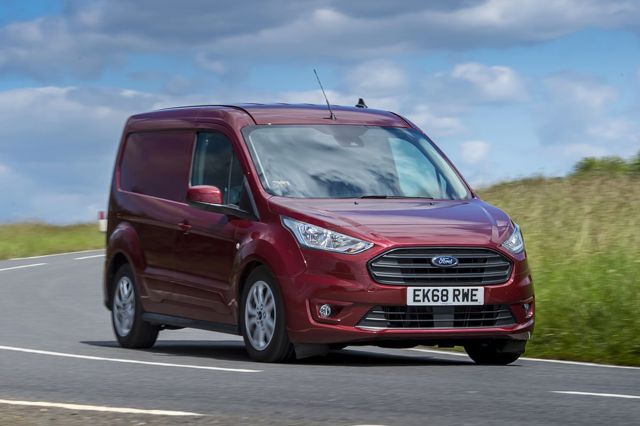


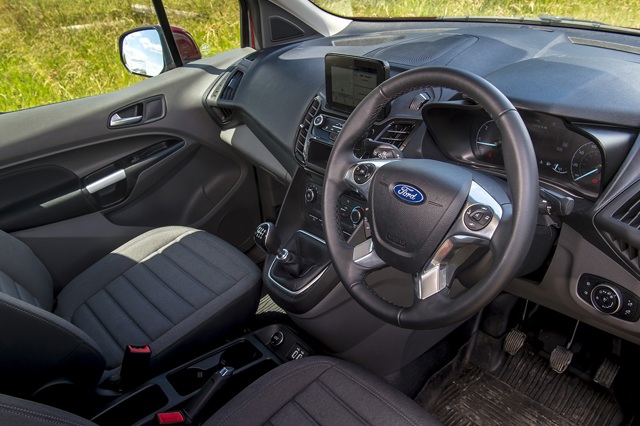
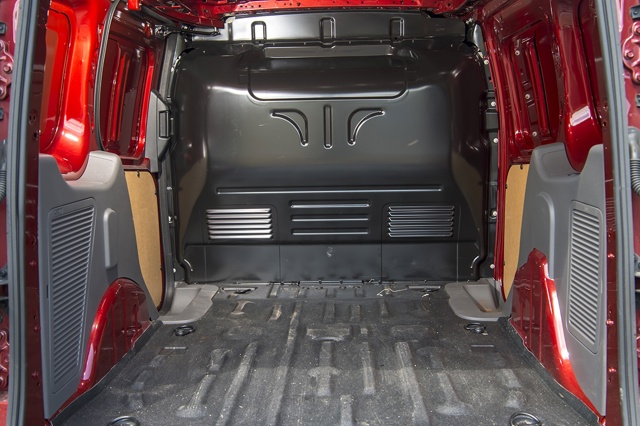
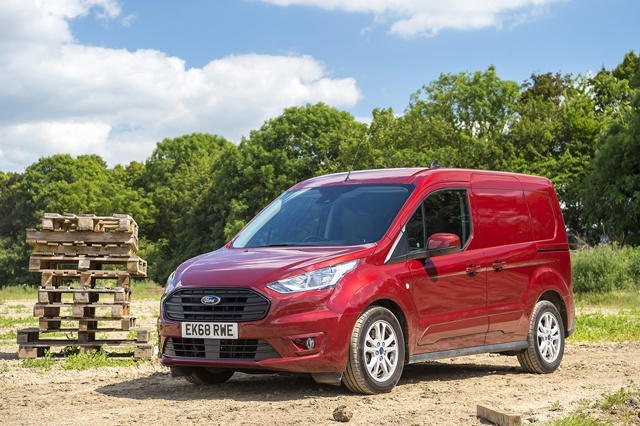



 Good to drive, comfortable cabin, practical load area, option of LED loadspace lighting.
Good to drive, comfortable cabin, practical load area, option of LED loadspace lighting.
 Can't match the payload of key rivals, three-seat versions will be an uncomfortable fit for adults.
Can't match the payload of key rivals, three-seat versions will be an uncomfortable fit for adults.
